Dominica is an island country located in the Caribbean Sea. It is home to a wide variety of bird species that make their homes in the lush rainforests, swamps, and mountains of the island.
From colorful parrots to tiny hummingbirds, Dominica’s bird population is truly spectacular.
In this article, you will learn about some of the most fascinating birds that call Dominica home.
1. Imperial Amazon
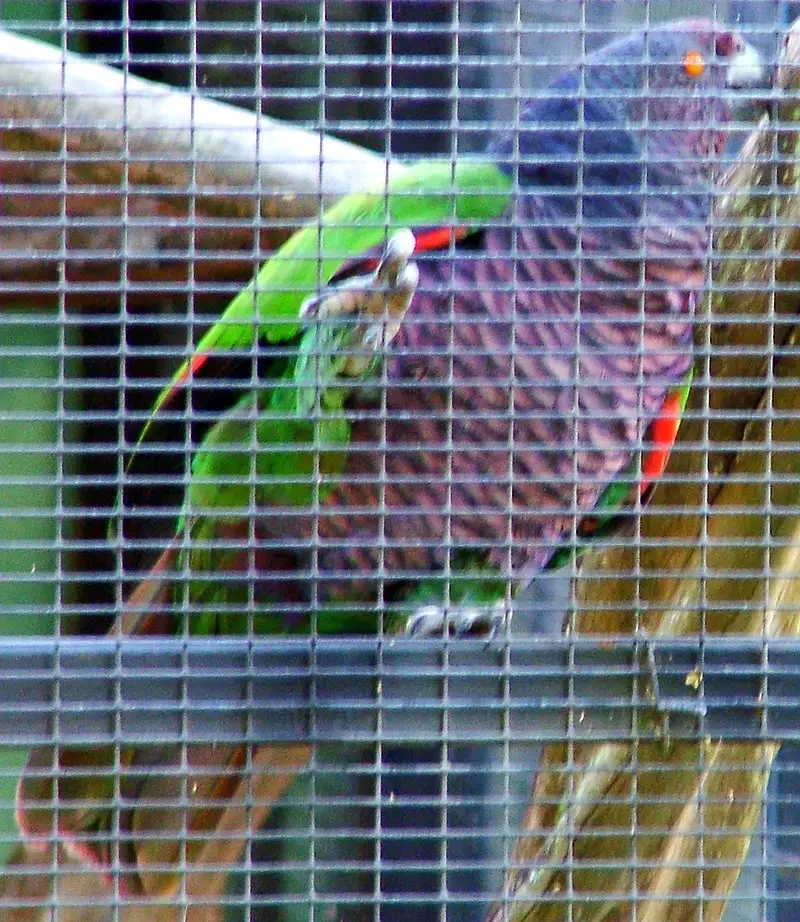
The Imperial Amazon is a parrot native to the Caribbean island of Dominica, and has been named its national bird. It is critically endangered with only around 50 mature individuals seen in the wild.
Averaging 48 cm (19 inches) long, it is mainly green with blue-tipped wings and tail feathers that are adorned by yellow, orange or red tones near their bases.
Furthermore, it has an impressive maroon head crest which gives this species its unique look among other birds on the island.
Unfortunately due to a combination of habitat destruction for agricultural use as well as hunting practices over many years have led to this once common parrot being pushed close to extinction today.
Conservation efforts must be taken soon if we want future generations to appreciate one of Dominca’s most beloved symbols in all its glory.Scientific classification:
| Kingdom | Animalia |
| Phylum | Chordata |
| Class | Aves |
| Order | Psittaciformes |
| Family | Psittacidae |
| Genus | Amazona |
| Species | A. imperialis |
Also Featured In: Imperial Birds You Should Know,
2. Red-Necked Amazon
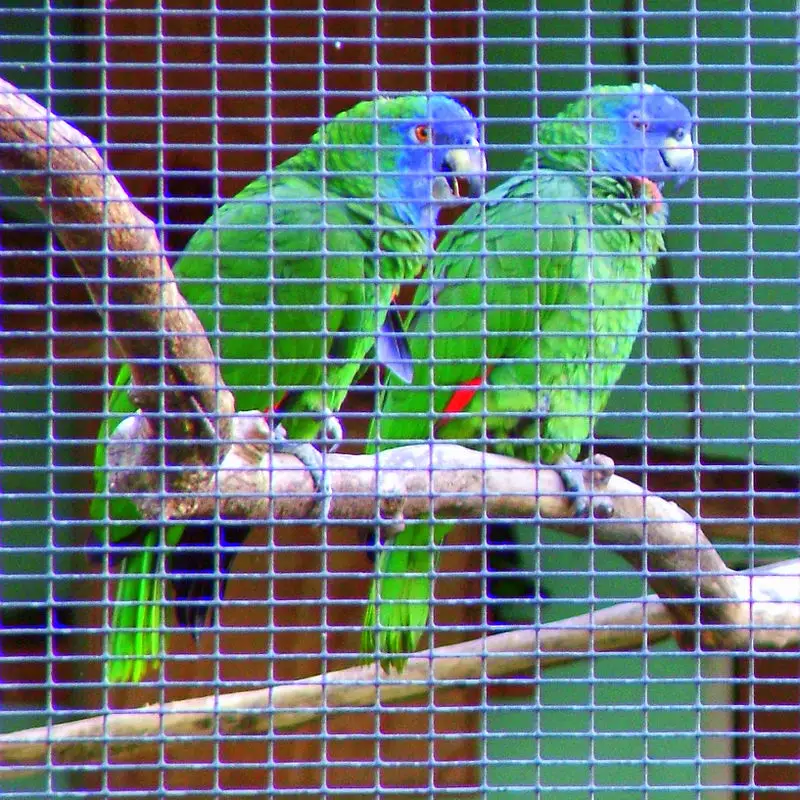
The Red-necked Amazon is a beautiful parrot found only on the Caribbean island of Dominica. It has an emerald green body, with bright splashes of colour such as yellow, blue and red feathers.
Its name comes from its distinctive red plumage at its throat area which sets it apart from other Amazons.
The Martinique amazon (A martinicana) was once thought to be related but is now extinct due to hunting and deforestation in this region.
These birds are social animals that flock together in small groups throughout Dominica’s tropical rainforest during the dry season months when food sources are plentiful.
With their stunning colours and cheery personalities they make great pets for those lucky enough to own one.Scientific classification:
| Kingdom | Animalia |
| Phylum | Chordata |
| Class | Aves |
| Order | Psittaciformes |
| Family | Psittacidae |
| Genus | Amazona |
| Species | A. arausiaca |
3. Purple-Throated Carib
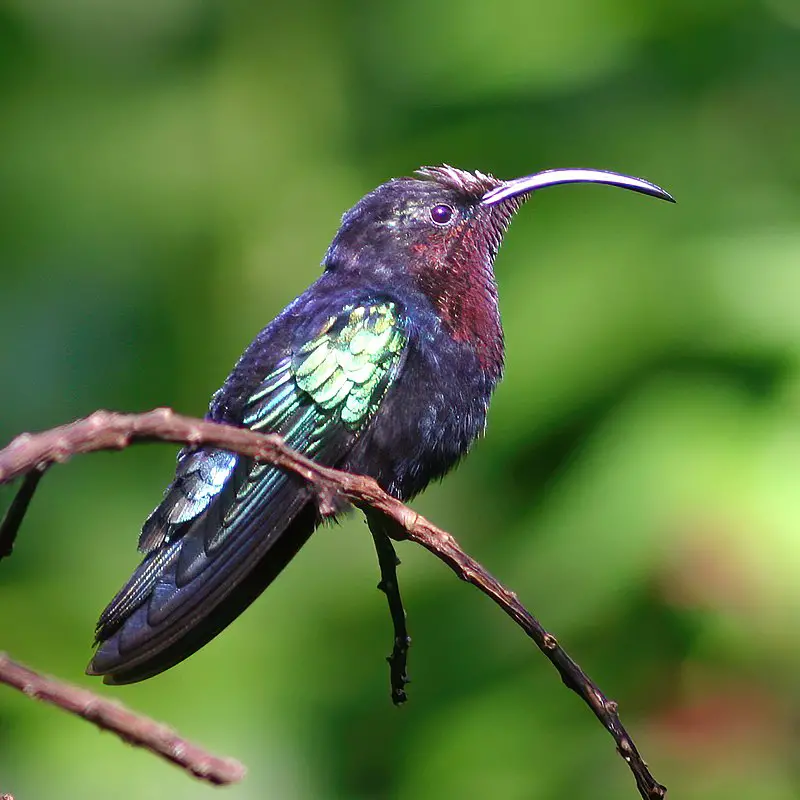
The Purple-throated Carib is a species of hummingbird found in the Lesser Antilles islands. It has stunning purple feathers along its throat, making it quite easy to identify amongst other birds.
This bird is usually seen alone or in pairs and can be found near forests and gardens where they feed on nectar from flowers.
The Purple-throated Carib also feeds on insects which helps keep insect populations under control around their habitat areas.
They are known as strong fliers that have been spotted both north and south of the Caribbean Islands showing just how far this resilient species can travel.
Overall, this vibrant little bird adds beautiful colour to any garden with its mesmerising plumage while providing an essential service at controlling bug numbers too.Scientific classification:
| Kingdom | Animalia |
| Phylum | Chordata |
| Class | Aves |
| Order | Apodiformes |
| Family | Trochilidae |
| Genus | Eulampis |
| Species | E. jugularis |
4. Venezuelan Troupial
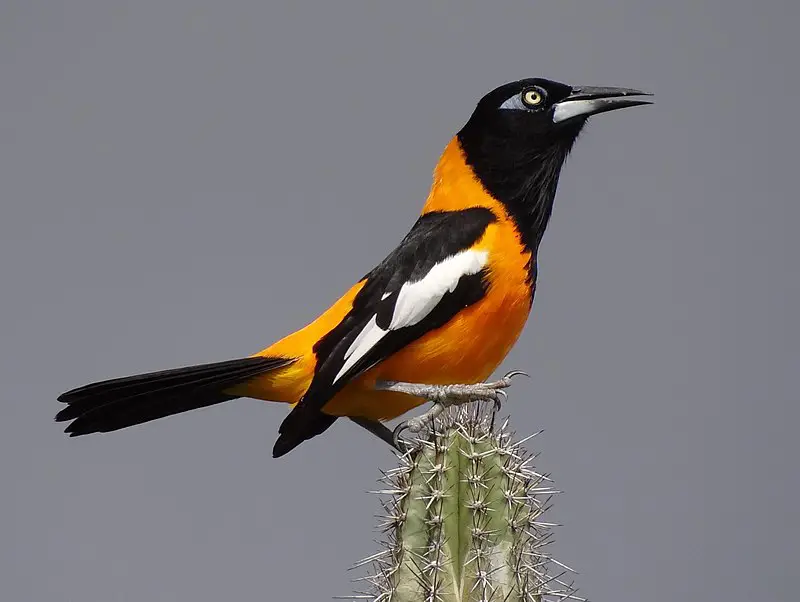
The Venezuelan troupial (Icterus icterus) is Venezuela’s national bird and can be found in Colombia, Venezuela and some Caribbean islands such as Aruba, Curaçao, Bonaire, Trinidad and Puerto Rico.
It was previously part of a superspecies known simply as the troupial with the orange-backed troupial and Campo troupial but has since been split off.
The name ‘troupial’ comes from French ‘toupiare’, which means “troop” due to their tendency to gather in flocks outside of breeding season.
They are medium sized birds with males being slightly larger than females – both have black bodies that contrast against a bright yellow head or crest.
Their wingspan averages at around 35cm long making them quite agile flyers when they migrate each year between November to April for warmer climates.Scientific classification:
| Kingdom | Animalia |
| Phylum | Chordata |
| Class | Aves |
| Order | Passeriformes |
| Family | Icteridae |
| Genus | Icterus |
| Species | I. icterus |
5. Procellariidae
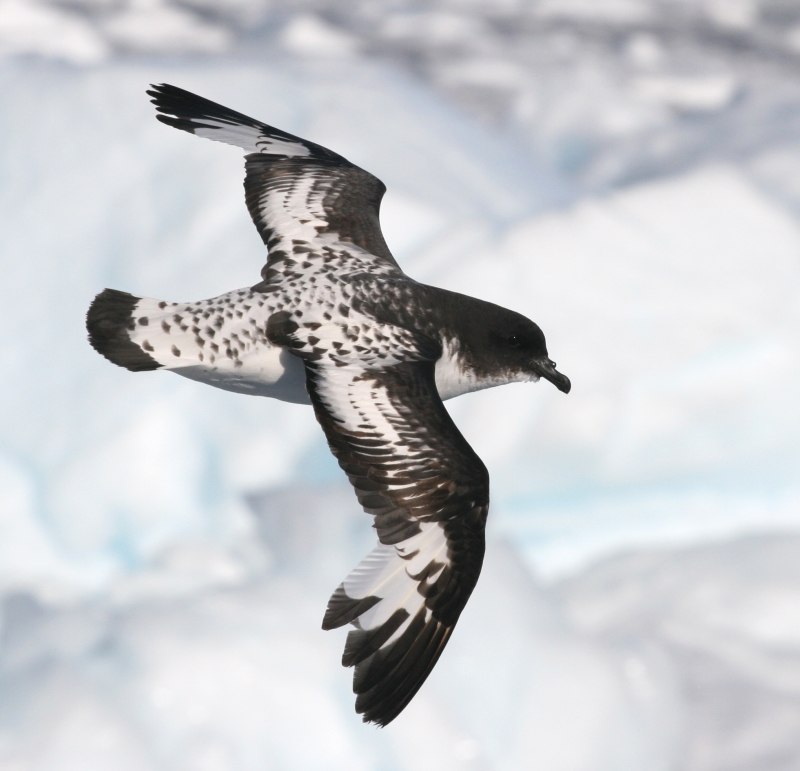
Procellariidae is a diverse family of seabirds belonging to the bird order Procellariiformes.
These birds are commonly referred to as tubenoses and include fulmarine petrels, gadfly petrels, diving petrels, prions, and shearwaters.
They range in size from the small storm-petrel which measures around 18cm long to the giant albatross which can reach up to 3 meters in length.
Generally found near oceans or coasts where they feed on fish as well as squid and other marine life depending on species.
Many procellariids will also nest inland during breeding season before returning back out at sea for most of their lives.
Their wings have specially adapted feathers that give them incredible gliding abilities allowing them literally fly with minimal effort over vast distances across oceanic regionsScientific classification:
| Kingdom | Animalia |
| Phylum | Chordata |
| Class | Aves |
| Order | Procellariiformes |
| Family | Procellariidae Leach, 1820 |
6. Green Heron
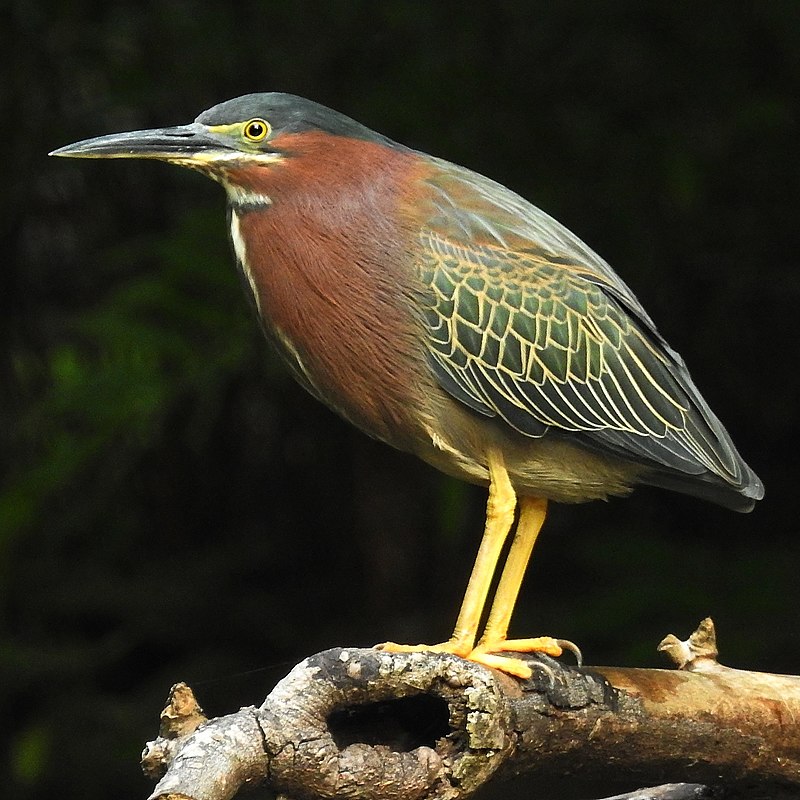
The Green Heron (Butorides virescens) is a small heron found throughout North and Central America.
It’s scientific name comes from Middle English ‘butor’ meaning bittern, combined with the Latin term for its distinctive greenish color – ‘virescens’.
For many years it was considered to be part of the same species as the Striated Heron (Butorides striata), commonly referred to as “green-backed herons”.
The nominate subspecies inhabits wetlands across much of this range, where they can be spotted stalking about in shallow water looking for fish or frogs on which to feed.
They are fascinating wading birds that have even been known to use tools such as sticks or baited lines when fishing.Scientific classification:
| Kingdom | Animalia |
| Phylum | Chordata |
| Class | Aves |
| Order | Pelecaniformes |
| Family | Ardeidae |
| Genus | Butorides |
| Species | B. virescens |
7. Tyrant Flycatchers
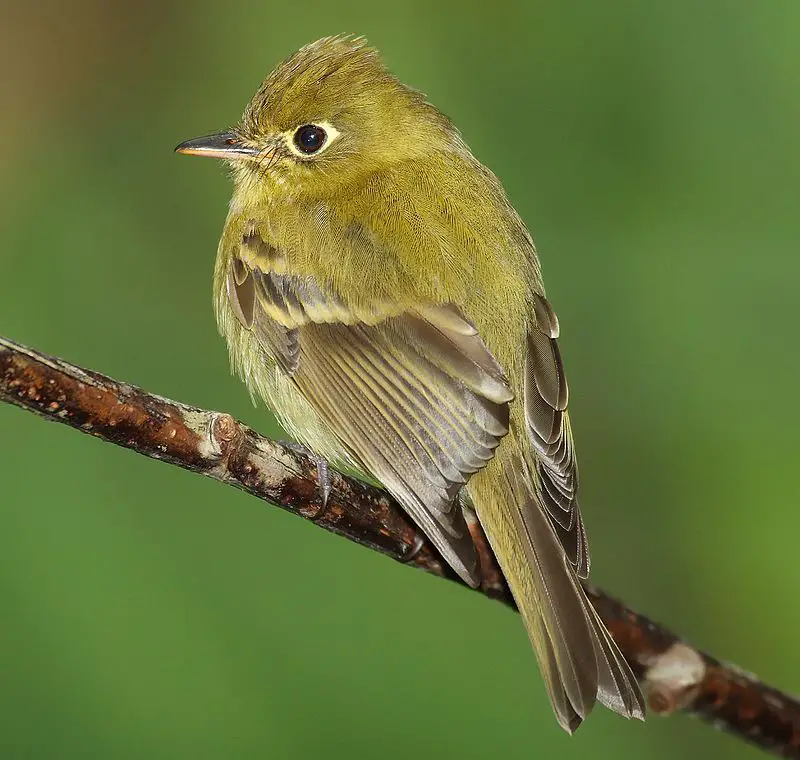
Tyrant flycatchers are a family of birds found in North and South America, containing over 400 species. These birds come in an array of shapes and sizes, with vibrant plumage to match.
They�re the most diverse avian family across all countries they inhabit except for the United States and Canada.
Their diet consists mainly of insects but also includes small reptiles or amphibians where available.
The behavior varies between each bird; some prefer open areas while others like dense forests as their habitat � many even migrate regularly.
Tyrant Flycatchers have adapted well to human presence thanks to the abundance of food sources that often accompany it � such as backyards, parks etc..
All things considered these incredible creatures are truly amazing.Scientific classification:
| Kingdom | Animalia |
| Phylum | Chordata |
| Class | Aves |
| Order | Passeriformes |
| Parvorder | Tyrannida |
| Family | Tyrannidae Vigors, 1825 |
8. Tanagers
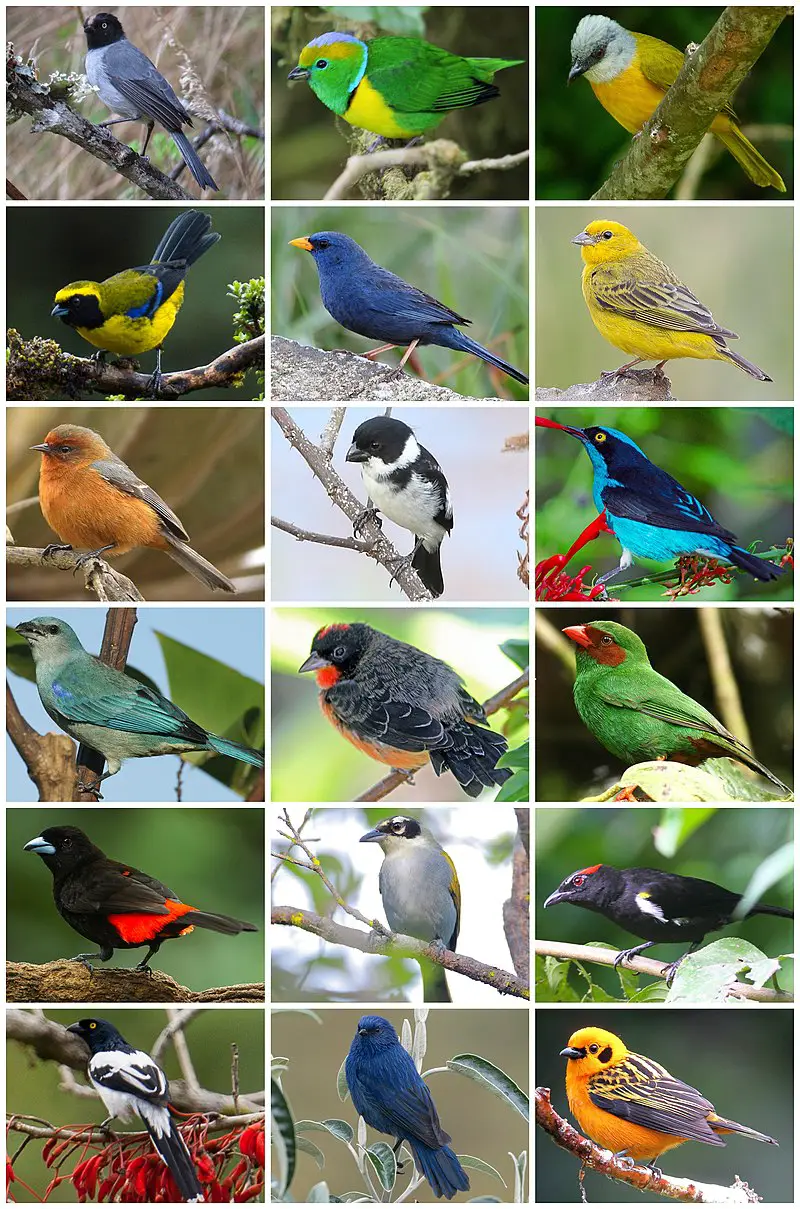
The Tanagers are a beautiful and diverse family of birds native to the Neotropical region. They boast an impressive array of colors, including blues, greens, yellows and reds.
The most common type is the fruit-eating tanager that can be found in tropical forests across Latin America. With nearly 240 species worldwide, they represent almost 4% of all avian species.
These vibrant birds have adapted well to their environment due to their strong bills used for cracking open hard fruits as well as sharp claws for gripping branches while feeding or perching.
As with many other bird families there is natural variation among populations making each one unique in its own way; something that makes them even more special.Scientific classification:
| Kingdom | Animalia |
| Phylum | Chordata |
| Class | Aves |
| Order | Passeriformes |
| Superfamily | Emberizoidea |
| Family | Thraupidae Cabanis, 1847 |
9. Nightjars
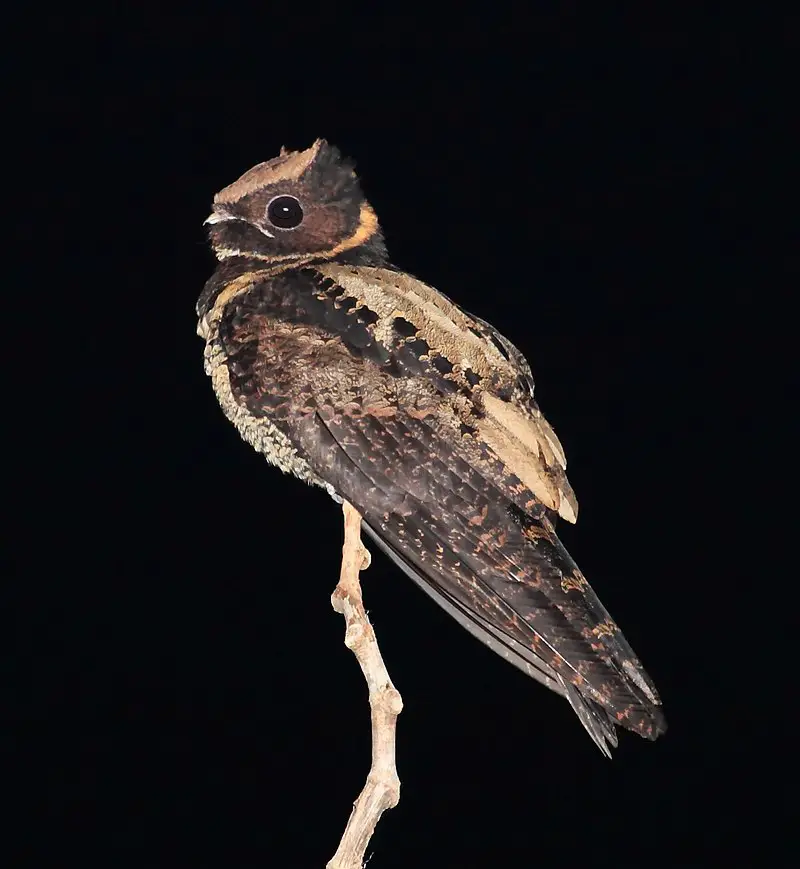
Nightjars are fascinating nocturnal or crepuscular birds belonging to the Caprimulgidae family. These medium-sized birds have long wings, short legs and very small bills.
They can be found across many parts of the world in forests, grasslands and scrubland habitats.
Nightjars feed on insects such as moths, beetles, crickets and cicadas which they catch with their sharp eyesight during night time flights over open fields when hunting for food.
Their scientific name ‘Caprimulgidae’ is derived from an old folktale that claims these birds suck milk from goats.
In reality though, they are harmless creatures who pose no threat to livestock whatsoever.
Nightjars make a variety of different calls ranging from whistles to chirps all throughout the night – adding further mystery to this amazing species.Scientific classification:
| Kingdom | Animalia |
| Phylum | Chordata |
| Class | Aves |
| Clade | Strisores |
| Order | Caprimulgiformes Ridgway, 1881 |
| Family | Caprimulgidae Vigors, 1825 |
10. Waxwing Birds
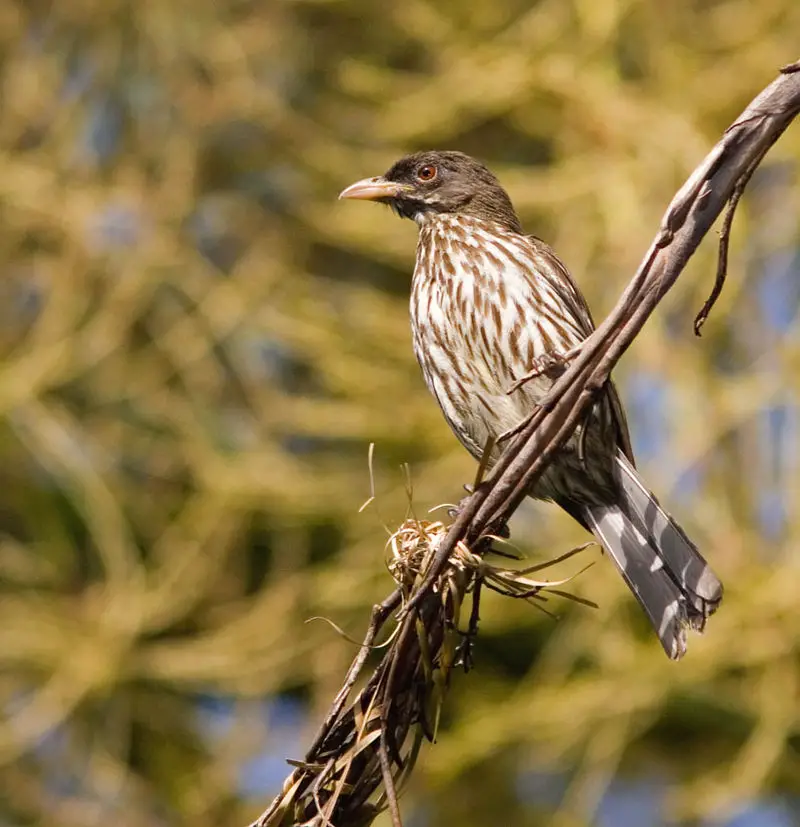
Waxwings are a group of passerine birds found mainly in the Northern Hemisphere. They have soft silky plumage, unique red tips to some of their wing feathers and a crest on top of their head.
Waxwings are social birds that live in small flocks during non-breeding season and these groups can sometimes become very large when they gather at fruit trees for feeding opportunities.
The waxwing diet consists mostly of fruits such as rowan berries, cedar cones and rose hips which give them an attractive orange hue due to the carotenoid pigments present in many fruits.
During breeding season males will sing from high perches while females build nests made up sticks lined with grasses or other fine materials located close to fruiting bushes/trees for easy access to food sources for both themselves and their young ones.
11. Threskiornithidae
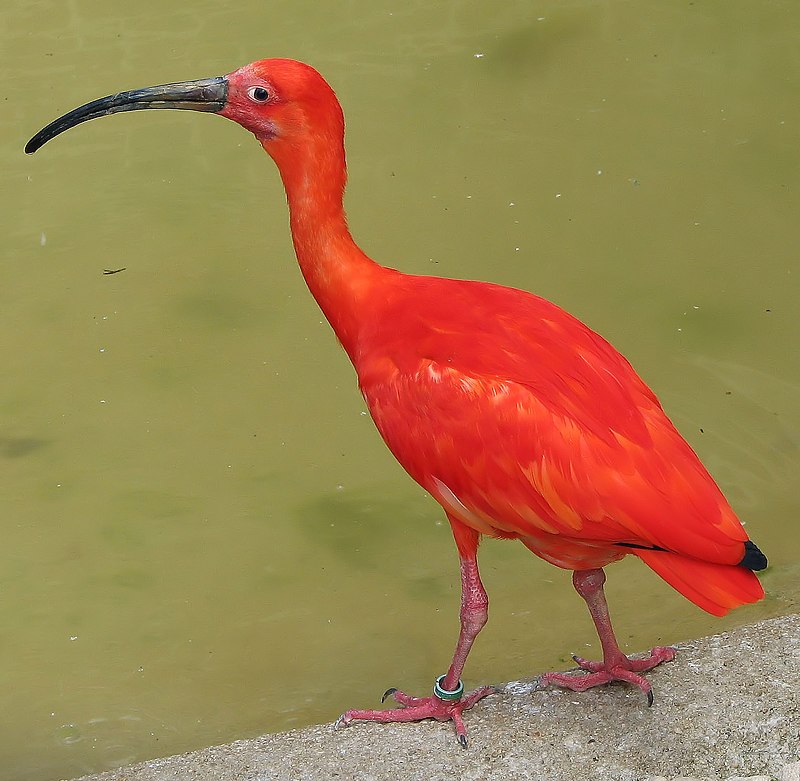
Threskiornithidae is a family of large wading birds which includes 36 species. These birds are traditionally divided into two subfamilies – the ibises and the spoonbills.
However, recent genetic analysis has shown that spoonbills actually belong to Old World ibis group, while New World ibises form an early offshoot from this lineage.
Threskiornithidse members have long curved beaks with serrated edges used for catching fish in shallow water or mudflats, as well as other aquatic invertebrates like crustaceans and mollusks.
They also feed on plant matter such as grains and seeds found close to wetlands areas where they live.
This diverse diet makes them important scavengers in their ecosystems, helping maintain healthy populations of native wildlife by controlling insect numbers and dispersing energy-rich seeds throughout wetland habitats.Scientific classification:
| Kingdom | Animalia |
| Phylum | Chordata |
| Class | Aves |
| Order | Pelecaniformes |
| Suborder | Ardei |
| Family | Threskiornithidae Richmond, 1917 |
12. Mimid

Mimid birds are a diverse family of passerines found in the New World. They have an impressive vocal range and many species excel at mimicking other bird songs, as well as noises from their environment.
Mimids can be identified by their flat heads with short crest feathers, long tails, large eyes and strong legs for hopping between branches.
These birds typically inhabit open woodlands or scrubland areas where they feed on insects such as beetles, caterpillars and grasshoppers.
Some species also supplement their diet with fruits or grains when available. While most do not migrate far during winter months some may undertake longer migrations to warmer climates if necessary to survive cold weather spells.
The wide variety of sounds these talented singers produce make them one of nature’s great musical performers.Scientific classification:
| Kingdom | Animalia |
| Phylum | Chordata |
| Class | Aves |
| Order | Passeriformes |
| Superfamily | Muscicapoidea |
| Family | Mimidae Bonaparte, 1853 |
13. Red-Legged Thrush
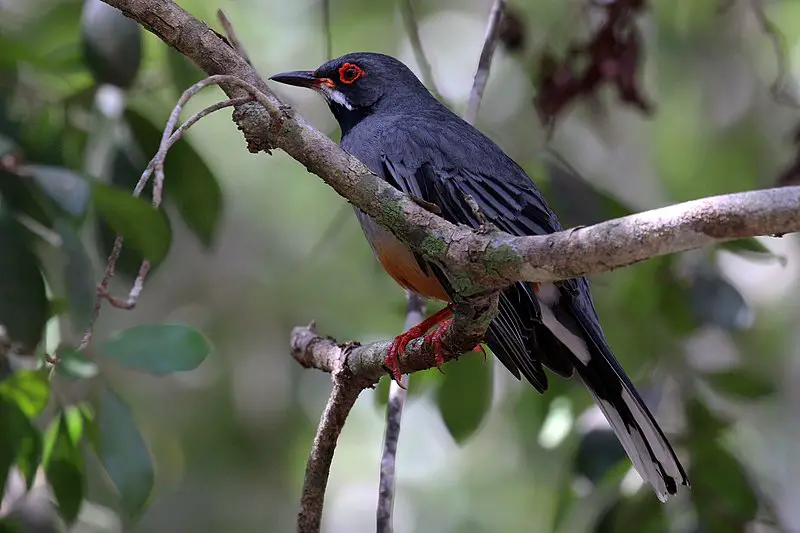
The Red-legged Thrush is a species of bird belonging to the Turdidae family, native to the Caribbean.
It can be found in places such as Bahamas, Cayman Islands and Puerto Rico where it goes by the name ‘Zorzal de patas coloradas’.
Unfortunately, this beautiful creature has been extirpated from Swan Island, Honduras. Its natural habitats are subtropical or tropical moist lowland forests and heavily degraded former forest areas.
This small thrush measures up to 22 cm in length with blackish upperparts while its underparts have reddish tinge on them which gives it an attractive appearance.
They mainly feed on fruits but also hunt for insects occasionally making it omnivorous in nature.Scientific classification:
| Kingdom | Animalia |
| Phylum | Chordata |
| Class | Aves |
| Order | Passeriformes |
| Family | Turdidae |
| Genus | Turdus |
| Species | T. plumbeus |
14. Black-Capped Petrel
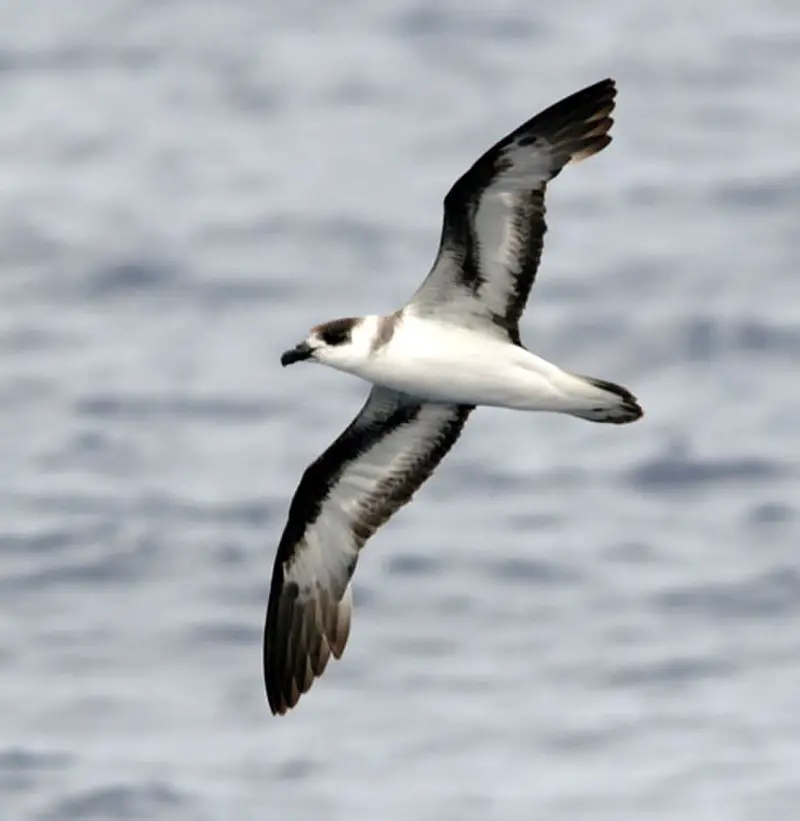
The Black-capped Petrel is a small seabird native to the West Indies. It has grey-brown back and wings, with a white nape and rump.
Its distinct feature is its black cap which extends to cover the eye in some individuals.
They have mainly white underparts apart from dark underwing markings as well.
These birds typically feed on crustaceans, fish eggs, squid or jellyfish plucked out of water while flying low over it with their relatively long wingspan aiding them in flight efficiency and speed.
Breeding season occurs around July-September during which they inhabit rocky cliff ledges near the shorelines for nesting purposes where they lay one egg at a time per nest.Scientific classification:
| Kingdom | Animalia |
| Phylum | Chordata |
| Class | Aves |
| Order | Procellariiformes |
| Family | Procellariidae |
| Genus | Pterodroma |
| Species | P. hasitata |
15. Rufous-Throated Solitaire
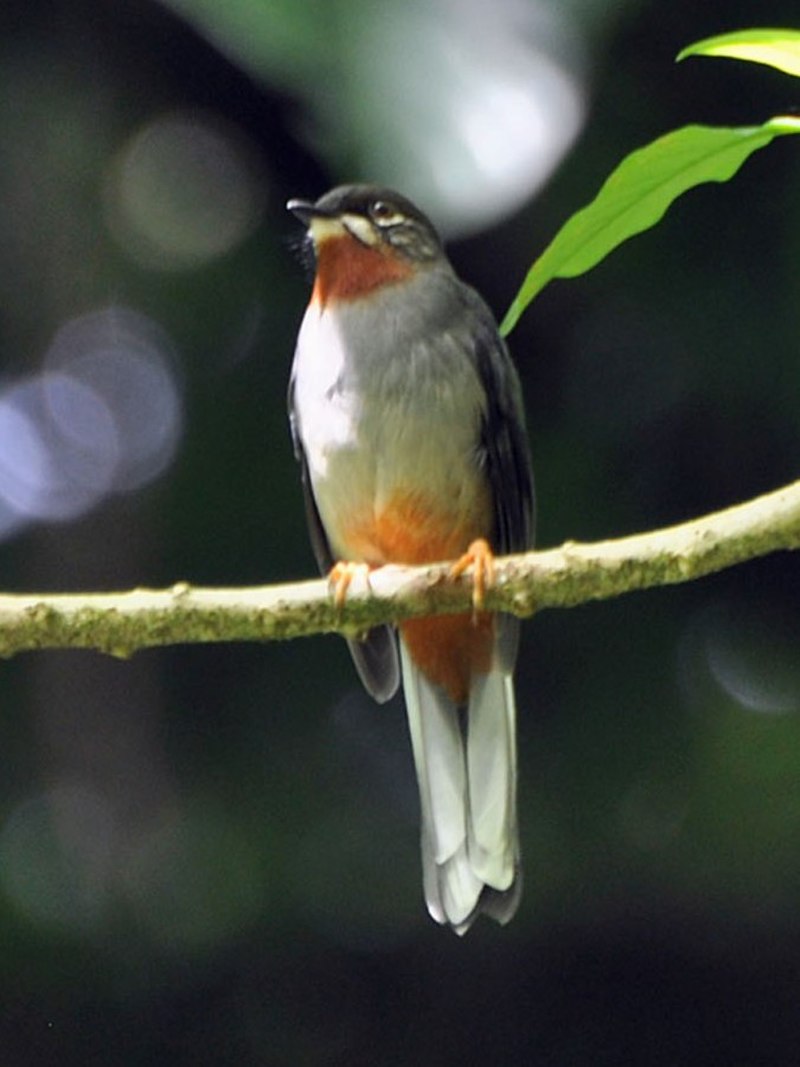
The Rufous-throated Solitaire is a species of bird belonging to the Turdidae family. It can be found in Dominican Republic, Haiti, Jamaica, Martinique and other Caribbean Islands with natural habitats including subtropical or tropical moist lowland forests and montane forests.
This beautiful medium sized songbird has unique characteristics like its greyish brown body colouration combined with an orangey throat that gives it its name; rufous-throated solitaire.
Besides being known by this name they are also nicknamed the ‘siffl’.
Unfortunately due to habitat destruction their population numbers have declined over recent years but conservation efforts are making some progress towards preserving these animals for future generations.Scientific classification:
| Kingdom | Animalia |
| Phylum | Chordata |
| Class | Aves |
| Order | Passeriformes |
| Family | Turdidae |
| Genus | Myadestes |
| Species | M. genibarbis |
16. Lesser Antillean Pewee
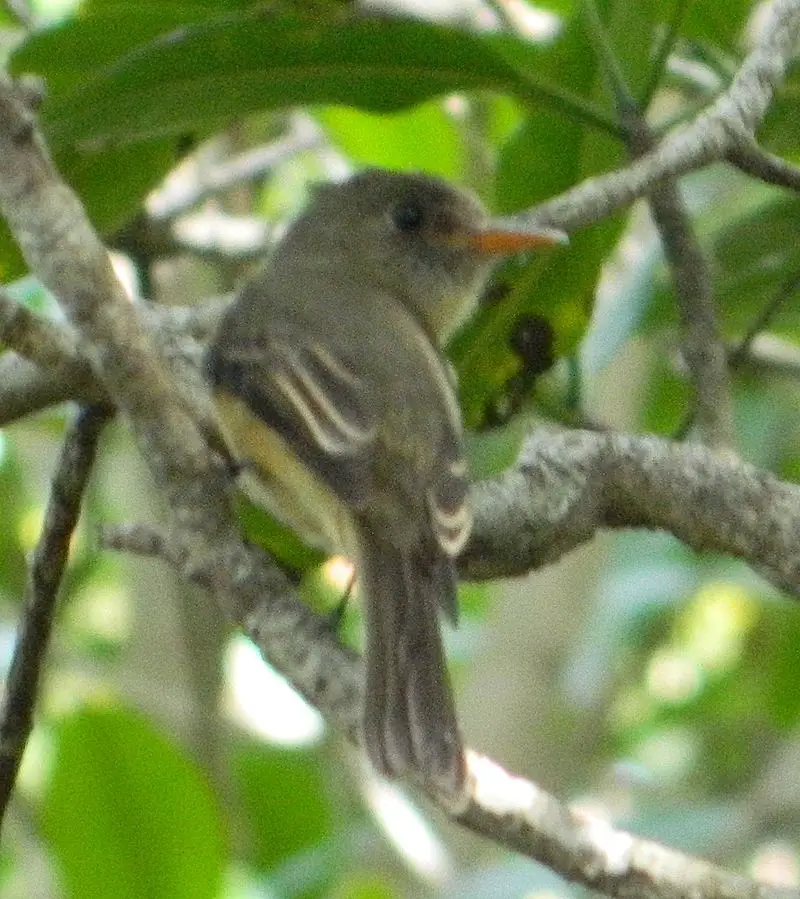
The Lesser Antillean pewee is a species of bird found in the family Tyrannidae. It can be spotted in Dominica, Guadeloupe, Martinique, Puerto Rico and Saint Lucia with records from Saint Kitts.
In fact some experts suggest that birds on Puerto Rico are different enough to be considered their own species (Puerto Rican pewee) while those living on St Lucia are also distinct enough to have been named ‘St Lucian Pewees’.
This small songbird prefers habitats like tropical or subtropical moist lowland forests as well as heavily degraded former forest areas.
With its drab grayish-brown plumage it’s rather unassuming but during breeding season males will give a distinctive “churrr” call which makes them easier to spot.Scientific classification:
| Kingdom | Animalia |
| Phylum | Chordata |
| Class | Aves |
| Order | Passeriformes |
| Family | Tyrannidae |
| Genus | Contopus |
| Species | C. latirostris |
17. Forest Thrush
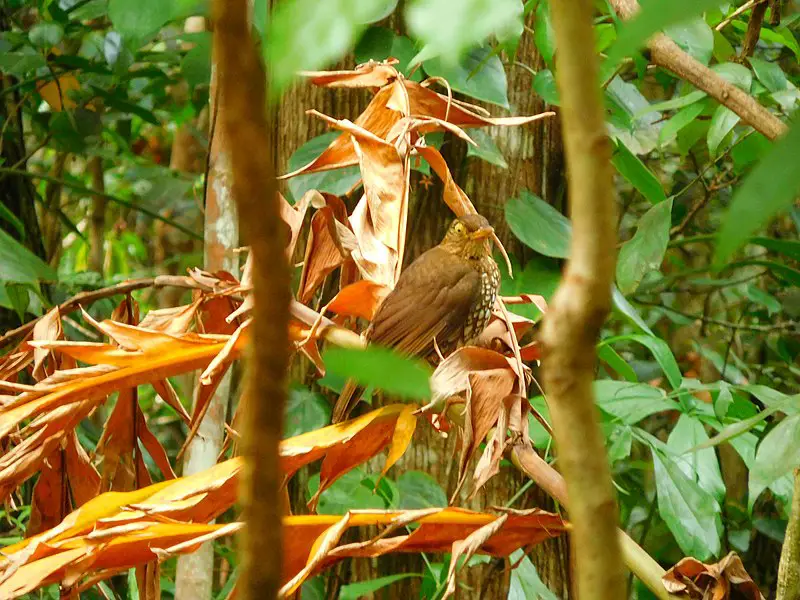
The Forest Thrush is a species of bird in the family Turdidae, found mainly in Central America. It has brown upperparts and pale underparts with scaly patterning on its feathers.
This medium-sized thrush measures 25 to 27 cm long and weighs between 100 to 110 grams.
Its diet consists mainly of fruits, insects, lizards and snails; it also sometimes feeds on small mammals like mice or shrews.
The female lays two eggs which she incubates for around 15 days before they hatch into young chicks who will remain dependent upon their parents until adulthood at around one year old.
These birds are very social creatures living within flocks that can number up to 30 individuals during the breeding season but may reduce down to four members outside of this period.Scientific classification:
| Kingdom | Animalia |
| Phylum | Chordata |
| Class | Aves |
| Order | Passeriformes |
| Family | Turdidae |
| Genus | Turdus |
| Species | T. lherminieri |
18. Plumbeous Warbler
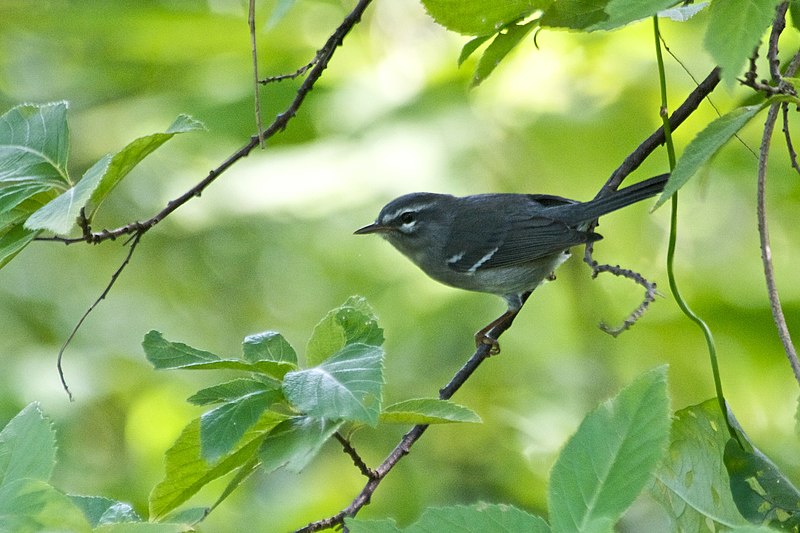
The Plumbeous Warbler is a species of bird found only in Dominica and Guadeloupe. It’s small, measuring at around 11 cm long with its head having shades of grey-olive on the back and crown while the breast has yellowish hues.
Its wings are mostly dark brown with white spots near the edges that can be seen when it flies.
This warbler loves to inhabit subtropical or tropical dry forest as well as moist lowland forests foraging among foliage for insects such as caterpillars, spiders, beetles, grasshoppers and more.
As an insectivore diet they also enjoy eating fruits like elderberry shoots occasionally too.
The secretive nature of this beautiful bird means it isn’t often seen but if you do spot one consider yourself lucky.Scientific classification:
| Kingdom | Animalia |
| Phylum | Chordata |
| Class | Aves |
| Order | Passeriformes |
| Family | Parulidae |
| Genus | Setophaga |
| Species | S. plumbea |
Also Featured In: Native Birds Of Guadeloupe Island,
19. Antillean Euphonia
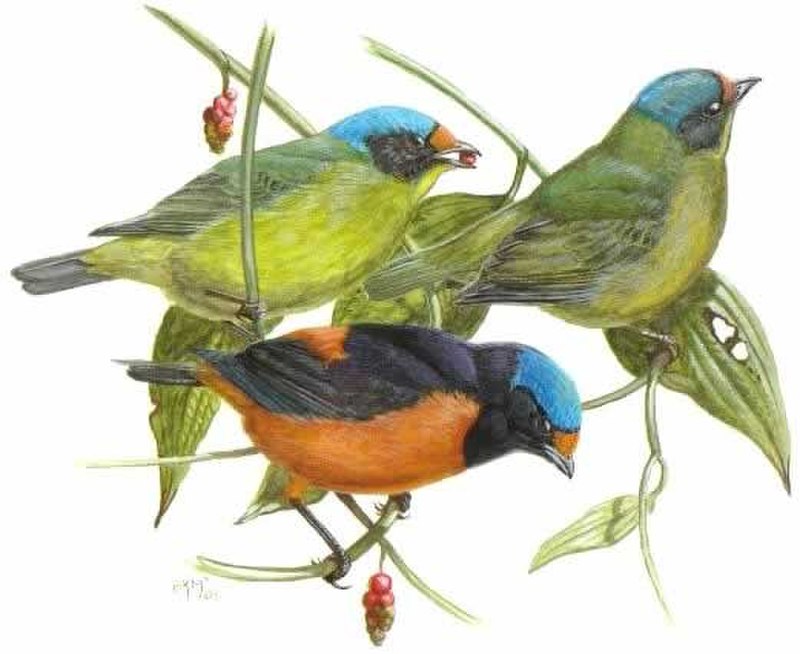
The Antillean euphonia is a colorful and beautiful bird species found across the Lesser Antilles, Hispaniola (Dominican Republic and Haiti) and Puerto Rico.
It belongs to Fringillidae family of finches. This small songbird has strong yellow feathers on its head with blue-green upperparts while they have bright orange breasts and bellies.
Their wings are blackish with white tips, giving them an attractive look when flying in flocks through woodlands or forest edges.
They inhabit subtropical or tropical dry forests as well as moist lowland forests including degraded former ones too.
The populations of this species are declining due to deforestation but still remain common throughout their range if habitats can be preserved for their long term future survival.Scientific classification:
| Kingdom | Animalia |
| Phylum | Chordata |
| Class | Aves |
| Order | Passeriformes |
| Family | Fringillidae |
| Subfamily | Euphoniinae |
| Genus | Chlorophonia |
| Species | C. musica |
20. Brown Trembler
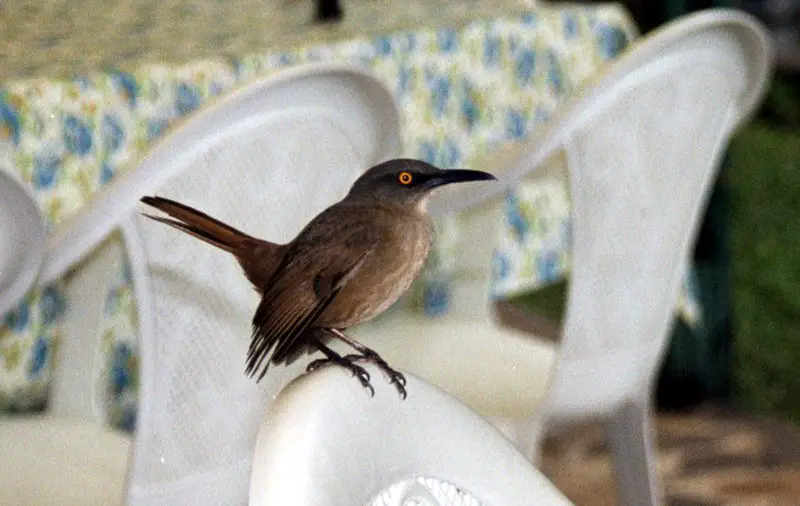
The Brown Trembler (Cinclocerthia Ruficauda) is a species of bird in the Mimidae family, which includes mockingbirds and thrashers. It can be found on seven Caribbean islands: Saba, St.
Kitts, Nevis, Montserrat, Guadeloupe, Dominica and St. Vincent. This bird has an olive-brown back with white underparts and unique tail feathers that quiver when perched or flying low over vegetation – hence its name.
The International Ornithological Committee recognizes nine subspecies due to slight variations between each island population; however further research is needed as some taxonomists believe there are more distinct populations within this species’ range.
Despite limited information about their ecology we do know they primarily feed on fruit from shrubs such as lignum vitae trees while foraging near ground level among tall grasses in open areas like pastures or coastal scrubland habitats.Scientific classification:
| Kingdom | Animalia |
| Phylum | Chordata |
| Class | Aves |
| Order | Passeriformes |
| Family | Mimidae |
| Genus | Cinclocerthia |
| Species | C. ruficauda |
21. Scaly-Breasted Thrasher
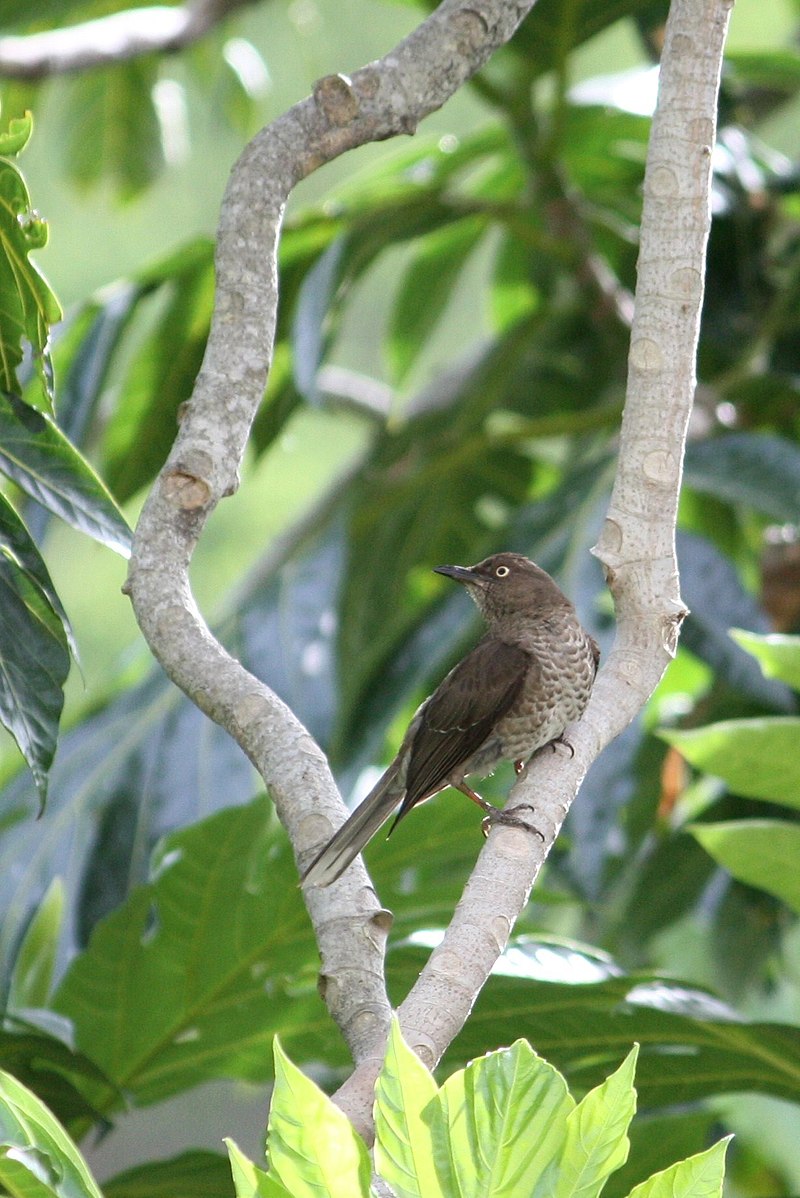
The Scaly-breasted Thrasher is a species of bird in the family Mimidae, found throughout much of the Lesser Antilles.
It has five subspecies and is approximately 23 cm long with greyish brown upperparts and black wings marked with white spots.
Its underparts are reddish orange to yellow buff, finely scaled or scalloped with darker edges, giving it its name.
This thrasher feeds mainly on insects but also eats fruits and berries as well as small lizards.
The male performs elaborate courtship displays which include soaring flights high into the air followed by singing from perches at the tops of trees or shrubs during breeding season between February – May period each year .
It typically nests low down in thickets near water sources such as rivers or streams using twigs bound together with spider web silk for nesting material , laying 2 to 3 eggs at one time.
The Scaly-breasted Thrashers are overall common birds that inhabit various habitats including mangroves, rainforests and dry scrublands across their range making them an important part of local ecosystems within their range.Scientific classification:
| Kingdom | Animalia |
| Phylum | Chordata |
| Class | Aves |
| Order | Passeriformes |
| Family | Mimidae |
| Genus | Allenia Cory, 1891 |
| Species | A. fusca |
22. Green-Throated Carib
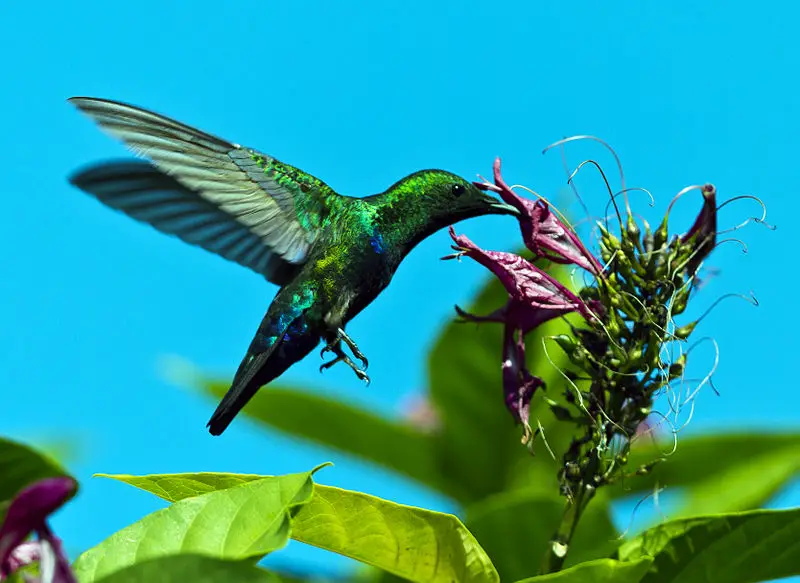
The Green-throated Carib is a species of hummingbird found in Puerto Rico and most of the Lesser Antilles. It was described by Swedish naturalist Carl Linnaeus in 1758.
The bird has distinctive green throat feathers, with iridescent blue on its back and wings. Its tail feathers are blackish brown at the base and white towards the tip, forming two distinct bands across their length.
This beautiful creature usually feeds on nectar from flowers or small insects such as spiders, bees and ants that it catches while flying through foliage.
Despite being fairly common throughout its range, this delightful little bird faces some threats due to habitat loss caused by human activity like agriculture or development projects taking place in areas where they live naturally.Scientific classification:
| Kingdom | Animalia |
| Phylum | Chordata |
| Class | Aves |
| Order | Apodiformes |
| Family | Trochilidae |
| Genus | Eulampis |
| Species | E. holosericeus |
23. Lesser Antillean Flycatcher
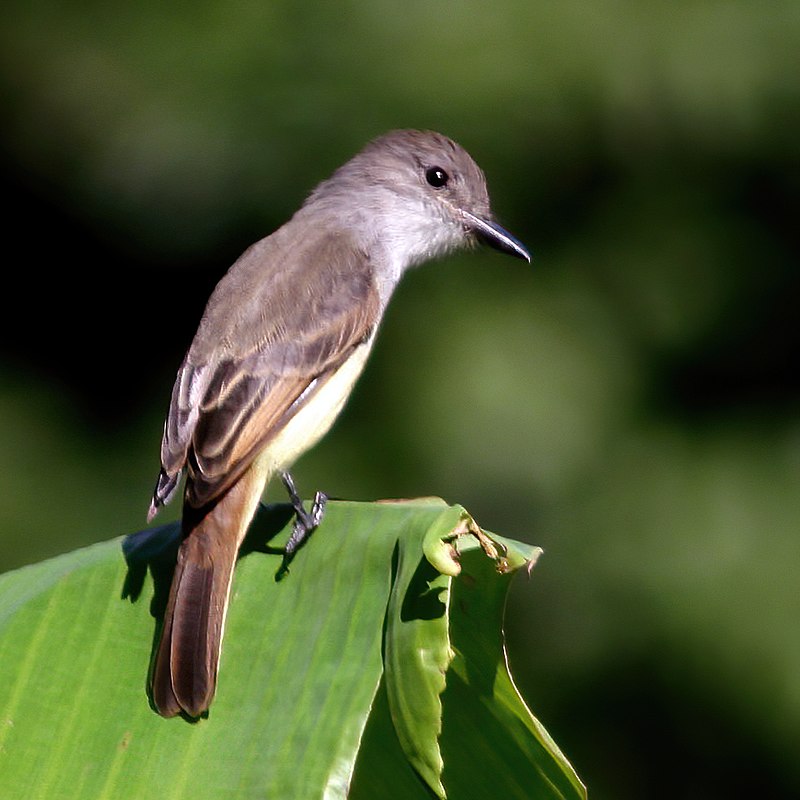
The Lesser Antillean flycatcher is a species of bird found in the Caribbean region. It belongs to the family Tyrannidae and inhabits subtropical or tropical moist lowland forests.
This small songbird has long wings, rounded heads, and short bills with distinct dark markings on its upperparts. Its diet consists mostly of insects which it catches by flying around branches and foliage looking for prey.
The Lesser Antillean flycatcher also builds its nest near tree trunks using twigs, leaves, feathers, grasses and bark strips as materials for construction.
Despite being widely distributed across several islands in the Caribbean Sea this species is considered vulnerable due largely to habitat destruction caused by human activities such as logging and urbanization throughout their range area.Scientific classification:
| Kingdom | Animalia |
| Phylum | Chordata |
| Class | Aves |
| Order | Passeriformes |
| Family | Tyrannidae |
| Genus | Myiarchus |
| Species | M. oberi |
24. Audubon’s Shearwater
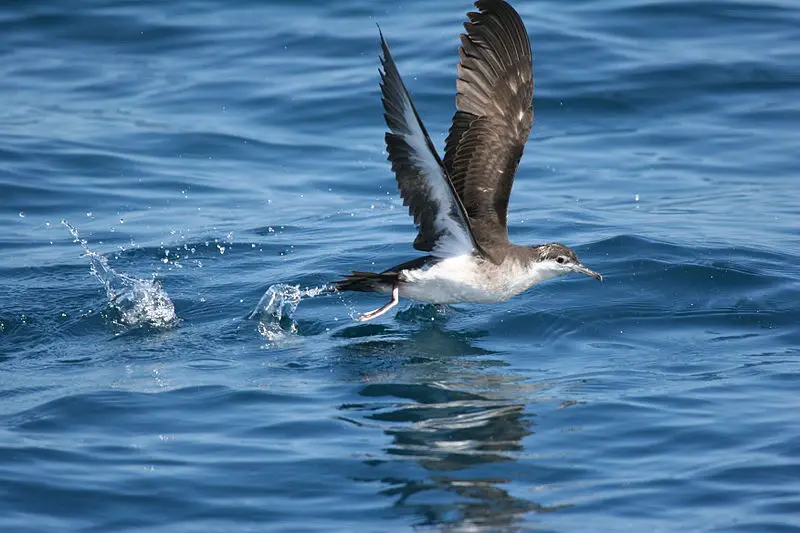
Audubon’s shearwater is a type of seabird belonging to the petrel family. It has many different monikers, including Baillon’s shearwater, tropical shearwater, Bannerman’s shearwater, Mascarene shearwater and Persian Sheawater.
This species was first discovered by French naturalist F�lix Louis L’Herminier in 1836 and earned its scientific name (Puffinus lherminieri) in his honour.
These birds are found throughout tropical oceans across the world from Africa to Asia and even Hawaii.
They have dark brown back feathers with white bellies which help them blend into their environment for protection against predators.
Audubon�s Sheerwaters feed on small fish near ocean surfaces or dive deep underwater when necessary due to their strong wings allowing them excellent swimming capabilities through powerful winds at sea level as well as incredible endurance during long distance flights over vast areas of open water around islands or coastlines.Scientific classification:
| Kingdom | Animalia |
| Phylum | Chordata |
| Class | Aves |
| Order | Procellariiformes |
| Family | Procellariidae |
| Genus | Puffinus |
| Species | P. lherminieri |
25. American Black Swift
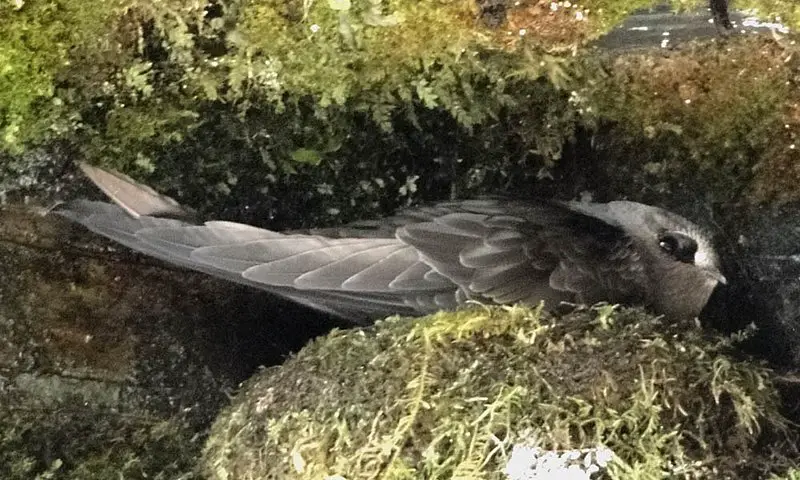
The American black swift is a species of bird that resides in North America, Central and South America as well as the Caribbean.
It was formally described by German naturalist Johann Friedrich Gmelin in 1789.
These birds prefer high mountain regions, living near fast-flowing streams or waterfalls with plenty of insects for food.
They have long wings which allow them to soar up on thermals and catch insects midair.
As their name suggests, they are almost entirely black with some lighter feathers around the neck area giving it an overall glossy look when seen from below.
Their breeding season takes place between May-August where both parents take part in caring for the young until they can fly independently after about 6 weeks old.Scientific classification:
| Kingdom | Animalia |
| Phylum | Chordata |
| Class | Aves |
| Order | Apodiformes |
| Family | Apodidae |
| Genus | Cypseloides |
| Species | C. niger |
26. Scaly-Naped Pigeon
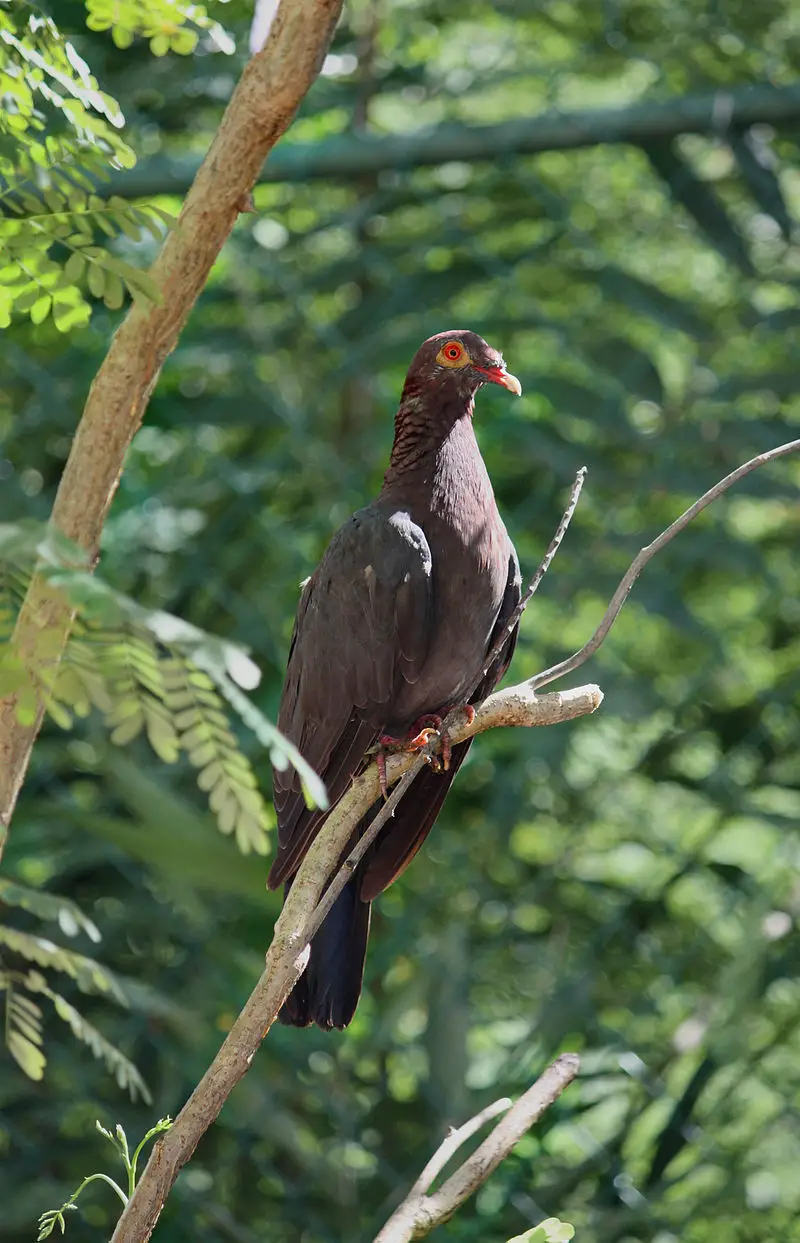
The scaly-naped pigeon is a large bird belonging to the family Columbidae. It has slate grey plumage with maroon coloured feathers around its neck, giving it the common name of red-necked pigeon.
The species originates from throughout the Caribbean and can reach 14–16 inches in length.
Its scientific name is derived from its unique feature: small scales on its nape which form an attractive pattern when viewed up close.
This makes them easily distinguishable from other birds within their range as they are one of few that have this characteristic.
They feed mainly on fruit but also consume seeds, insects and even carrion depending on availability at any given time of year or location.Scientific classification:
| Kingdom | Animalia |
| Phylum | Chordata |
| Class | Aves |
| Order | Columbiformes |
| Family | Columbidae |
| Genus | Patagioenas |
| Species | P. squamosa |
27. Zenaida Dove
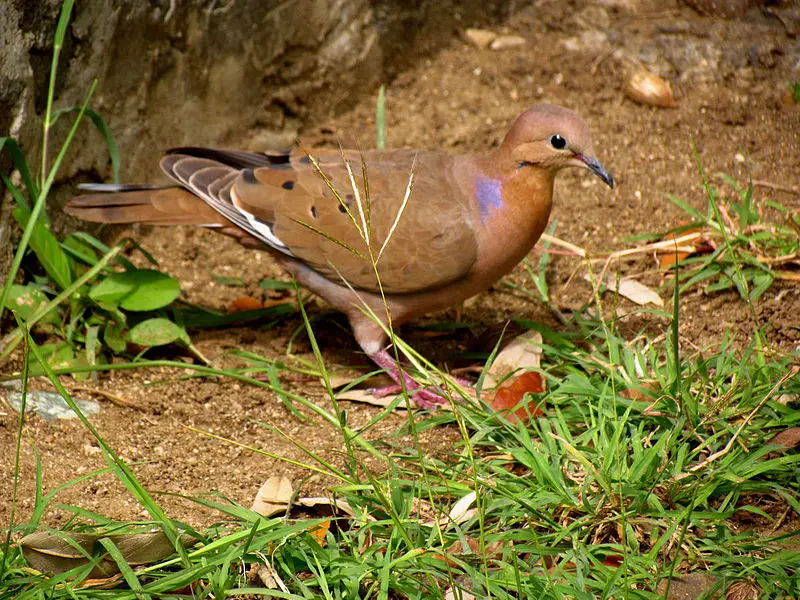
The Zenaida dove is a species of doves and pigeons found mainly in the Caribbean, but also parts of Mexico, Central America and South America.
With its distinct dark coloring, short rounded tail and an average length of 28-30 cm (11-12 inches), it stands out from other bird families.
It’s recognized as the national bird for Anguilla where locals refer to it as ‘turtle dove’. They are seen flying around open grasslands or roosting on tree branches close by populated areas.
These birds feed mostly on seeds that they pick off the ground while walking through fields.
The Zenaida Dove breeds all year round producing two broods during spring and summer months with both male and female taking turns incubating eggs over a span of 14 days before hatching into chicks.Scientific classification:
| Kingdom | Animalia |
| Phylum | Chordata |
| Class | Aves |
| Order | Columbiformes |
| Family | Columbidae |
| Genus | Zenaida |
| Species | Z. aurita |
28. Ruddy Quail-Dove
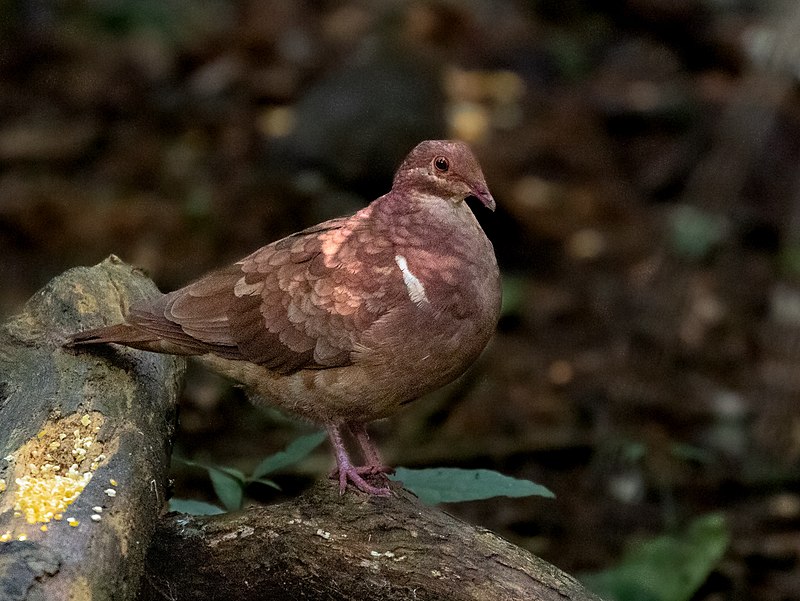
The Ruddy Quail-Dove is a beautiful bird native to the West Indies, Central and South America. It has a reddish brown plumage with dark spots on the wings and neck that give it an attractive appearance.
Its size ranges from 19–28 cm in length. The dove builds its nest either on shrubs or sometimes directly on the ground, laying two buff-colored eggs as part of their breeding cycle.
In recent years, there have been sightings of this species as far north as Florida and Texas proving just how resilient these birds are.
They feed mainly upon fruits found in woodland areas but also consume small invertebrates at times too.
All in all, this stunningly colored creature makes for an amazing addition to any environment they inhabit.Scientific classification:
| Kingdom | Animalia |
| Phylum | Chordata |
| Class | Aves |
| Order | Columbiformes |
| Family | Columbidae |
| Genus | Geotrygon |
| Species | G. montana |
29. Lesser Antillean Saltator
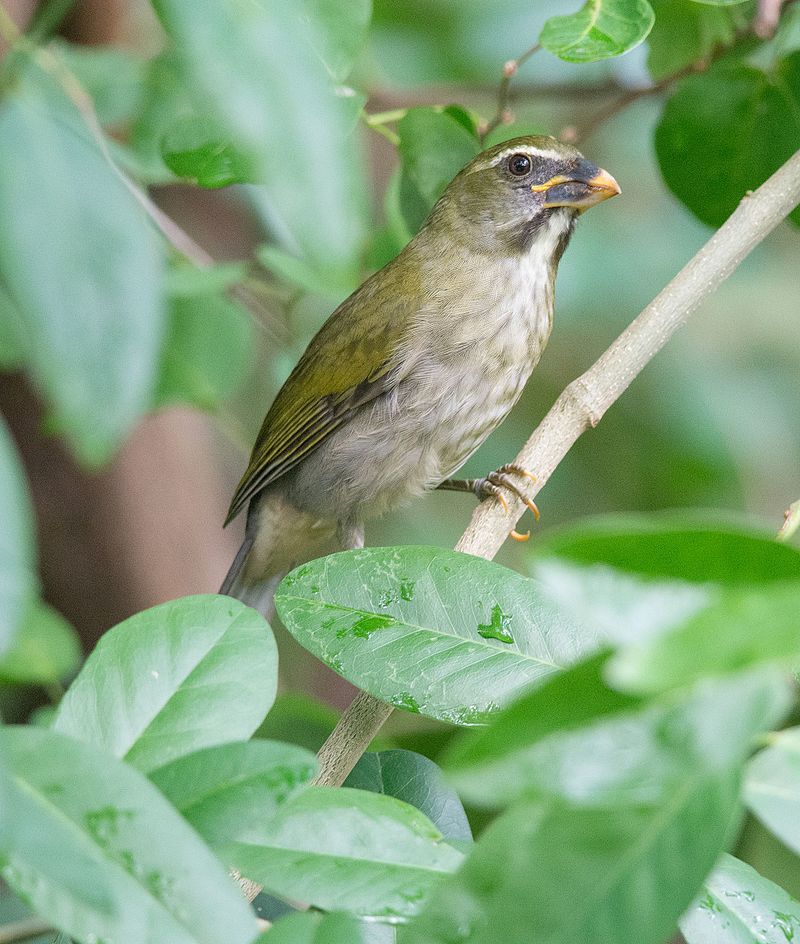
The Lesser Antillean saltator is a species of songbird found in Dominica, Martinique, Saint Kitts and Nevis, and Saint Lucia.
They live mainly in subtropical or tropical dry forests but can also be seen in heavily degraded former forest areas.
These birds have brown upperparts with blackish wings; their underparts are white to pale grey. They possess a thick bill which curves slightly downward at the tip.
Their diet consists mostly of insects such as beetles, flies and grasshoppers along with berries from trees like Miconia robinsoniana and Eugenia spicata that they forage for on the ground or lower branches within the canopy layer of these habitats.
The Lesser Antillean saltator plays an important role in controlling insect populations near its range making it crucial to maintain healthy ecosystems within this region.Scientific classification:
| Kingdom | Animalia |
| Phylum | Chordata |
| Class | Aves |
| Order | Passeriformes |
| Family | Thraupidae |
| Genus | Saltator |
| Species | S. albicollis |
30. Black-Whiskered Vireo
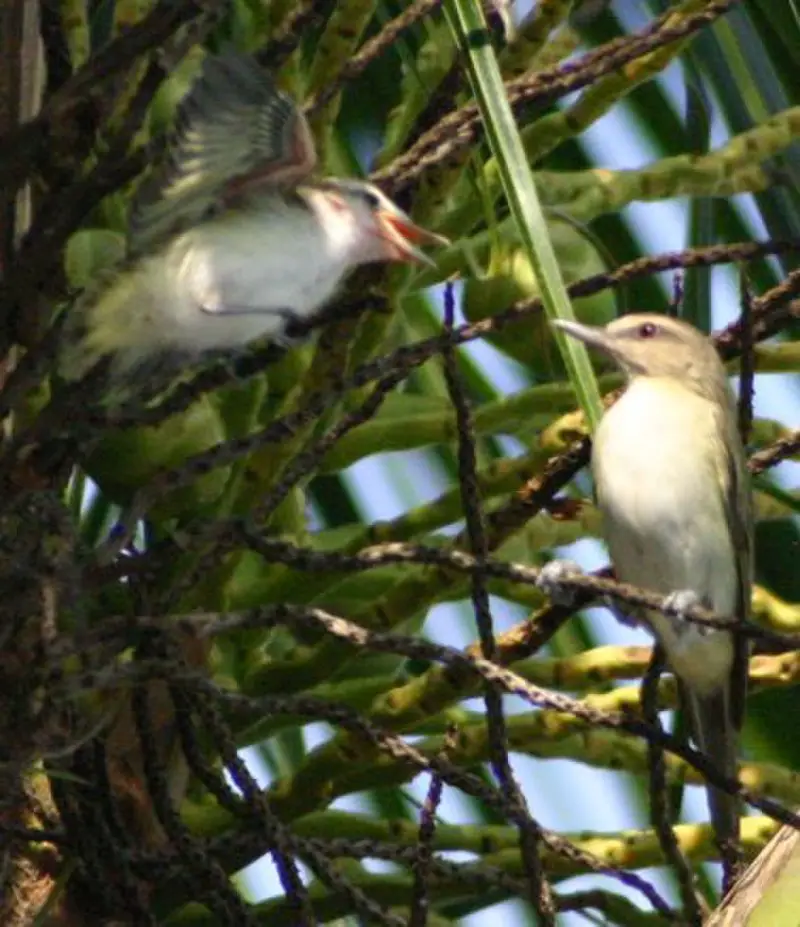
The black-whiskered vireo is a small passerine bird, found in the southern United States, West Indies and northern South America.
It breeds mainly in open deciduous wooded areas but has been known to be an occasional vagrant to Costa Rica.
This species migrates partially north during its winter season from Greater Antilles up towards northern parts of South America.
The male can easily be identified by his distinctive black whiskers on either side of its face while females are generally duller with white streaks along their wings and back.
They make nests at mid tree levels usually out of twigs, grasses or strips of bark which they line with finer materials like feathers or fur for insulation purposes.
All in all these birds are delightful additions to any habitat where they inhabit.Scientific classification:
| Kingdom | Animalia |
| Phylum | Chordata |
| Class | Aves |
| Order | Passeriformes |
| Family | Vireonidae |
| Genus | Vireo |
| Species | V. altiloquus |
31. Lesser Antillean Bullfinch
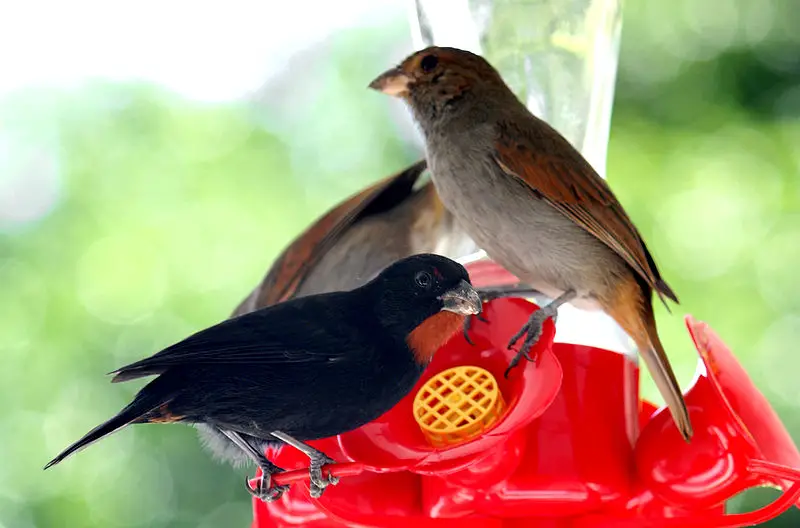
The Lesser Antillean Bullfinch is a species of bird found throughout the Caribbean islands. It has greenish-brown feathers, white cheeks and wings with black spots, and red-orange legs.
Its natural habitats include forests, mangroves and shrublands. This small finch feeds mainly on fruits but also eats insects such as caterpillars and moths in addition to nectar from flowers.
They are often seen foraging near flowering trees during the breeding season when they build nests made out of grasses or plant fibers lined with soft downy feathers for their young ones to rest in comfortably.
These birds have adapted well to human presence so can be easily spotted around gardens within cities where they come looking for food scraps left by people.Scientific classification:
| Kingdom | Animalia |
| Phylum | Chordata |
| Class | Aves |
| Order | Passeriformes |
| Family | Thraupidae |
| Genus | Loxigilla |
| Species | L. noctis |
32. Carib Grackle
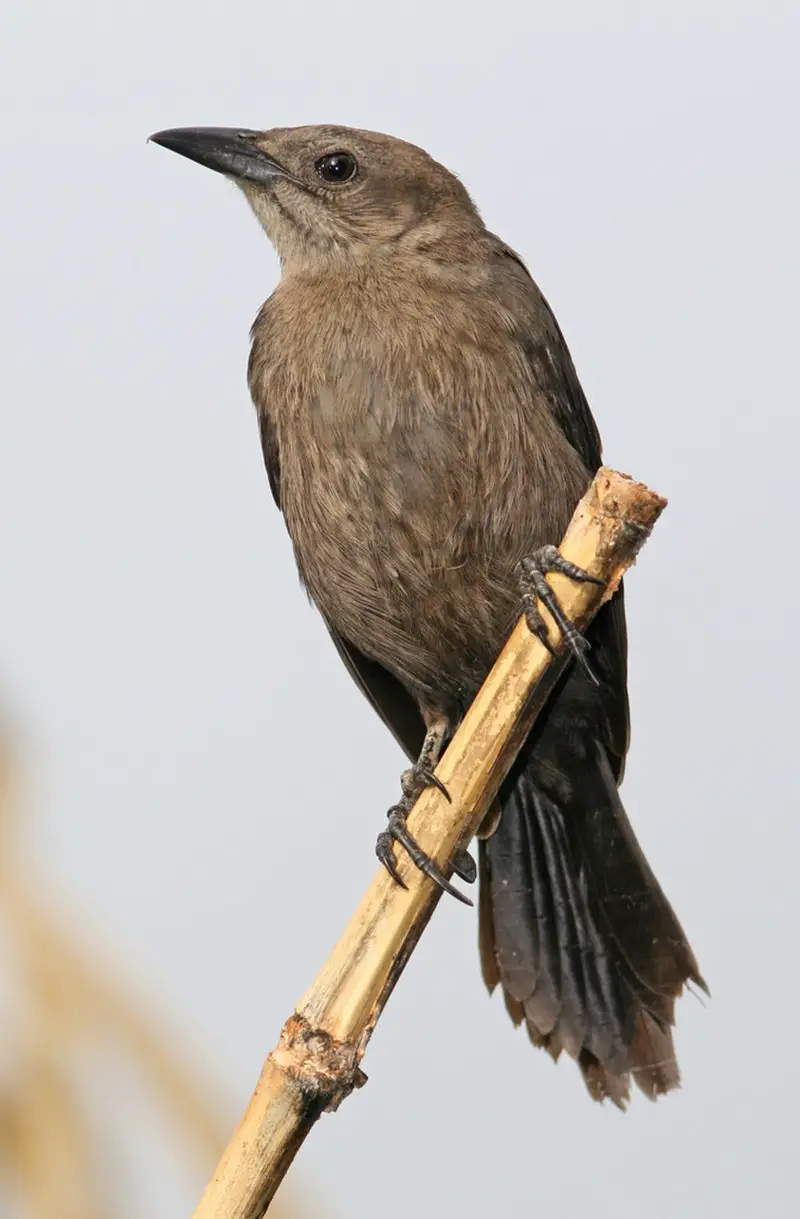
The Carib grackle is a tropical blackbird found in the Lesser Antilles and northern South America. It has eight subspecies, with the most widespread being Q. l. lugubris which can be found on Trinidad and much of mainland South America.
This particular subspecies was introduced to Puerto Rico during the 19th century where it now thrives due to its adaptability and tolerance towards human activity such as living near grazing animals or around farms.
Its diet consists mainly of small invertebrates, fruits, seeds and grains – all readily available in populated areas making it ideal for urban environments too.
They are also known for their beautiful songs used by males during breeding season to attract females but unfortunately this doesn’t last long as they generally only mate once throughout life before moving onto find another partner shortly after nesting season ends.Scientific classification:
| Kingdom | Animalia |
| Phylum | Chordata |
| Class | Aves |
| Order | Passeriformes |
| Family | Icteridae |
| Genus | Quiscalus |
| Species | Q. lugubris |
33. Black-Faced Grassquit
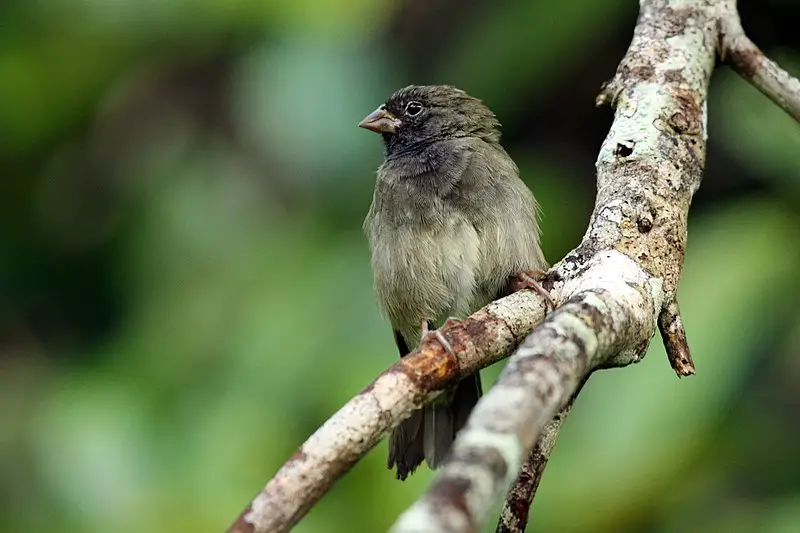
The Black-faced grassquit is a small bird belonging to the tanager family, genetically related to Darwin’s finches. It breeds mainly in the West Indies and along certain parts of Colombia and Venezuela.
The Swedish naturalist Carl Linnaeus first formally described it back in 1766 as part of his twelfth edition work on species classification.
This type of bird has a black head with white spots around its eyes, grey wings and tail feathers; its body is brownish orange or yellow with darker shades towards the belly area.
Its diet consists mostly of seeds from grasses but may also include other insects for additional nutrition during breeding season.Scientific classification:
| Kingdom | Animalia |
| Phylum | Chordata |
| Class | Aves |
| Order | Passeriformes |
| Family | Thraupidae |
| Genus | Melanospiza |
| Species | M. bicolor |
34. Pearly-Eyed Thrasher
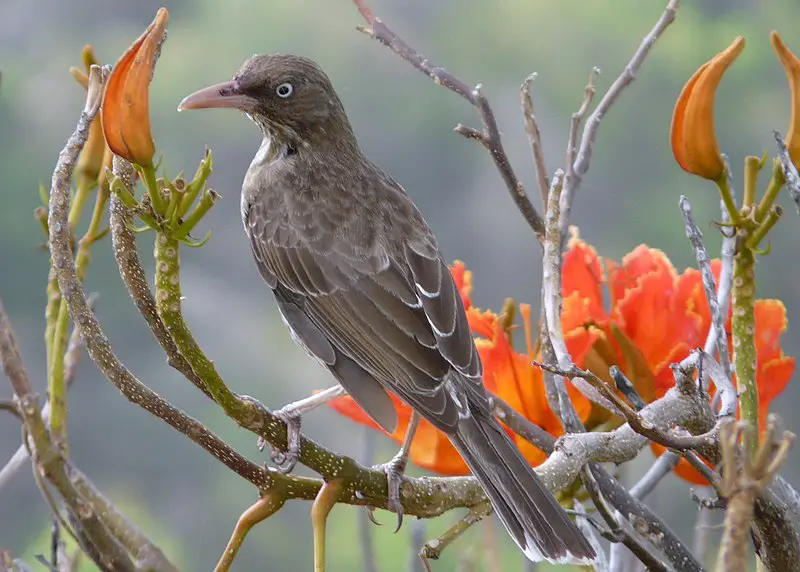
The Pearly-eyed Thrush is a unique and beautiful bird native to the Caribbean islands. It has stunning pearly eyes, with white patches on its wings and tail.
This thrasher measures up to 28-30 cm in length, making it the largest species of Mimidae family found in this area.
With an isolated subspecies living on Bonaire island, these birds have adapted well to their environment over time.
They feed mainly on insects found around them, but will also eat fruits or berries when available for extra nourishment.
These birds are often seen singing together as part of group displays at dawn or dusk – one more reason why they are so special.Scientific classification:
| Kingdom | Animalia |
| Phylum | Chordata |
| Class | Aves |
| Order | Passeriformes |
| Family | Mimidae |
| Genus | Margarops P.L. Sclater, 1859 |
| Species | M. fuscatus |
35. Stilt Sandpiper
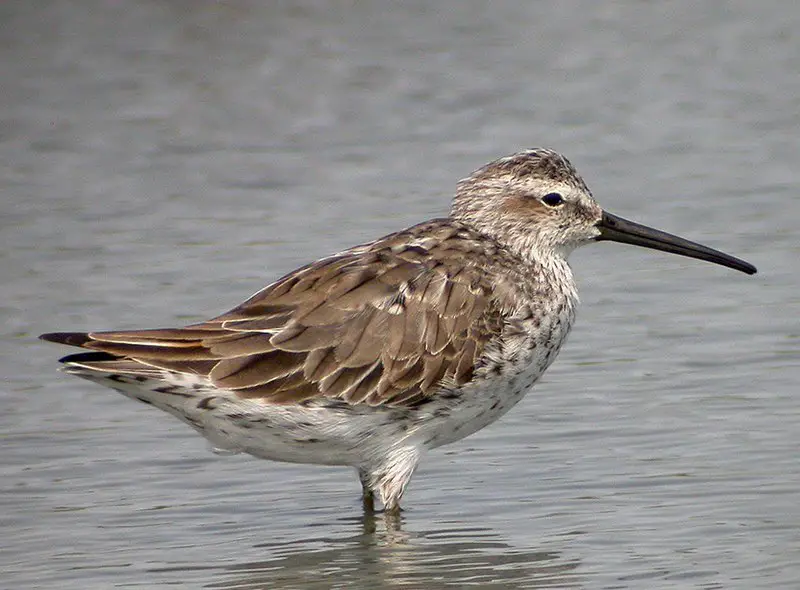
The Stilt Sandpiper (Calidris himantopus) is a small shorebird with ancient Greek origins. It has grey-coloured feathers, and its scientific name is derived from the terms “strap foot” or “thong foot”.
This bird bears some resemblance to smaller calidrid sandpipers, also known as ‘stints’. Through recent DNA sequence information, it was found that this species of birds are closely related to other wading shorebirds such as curlews and godwits.
They can usually be seen along the edges of rivers and creeks in shallow waters where they feed on aquatic insects like beetles, flies, mayflies etc., which makes them an important part of their ecosystem’s food chain.
The stilt sandpiper population appears to have been stable over time but further research needs to be done in order for us to understand more about this unique species.Scientific classification:
| Kingdom | Animalia |
| Phylum | Chordata |
| Class | Aves |
| Order | Charadriiformes |
| Family | Scolopacidae |
| Genus | Calidris |
| Species | C. himantopus |
36. Bulwer’s Petrel
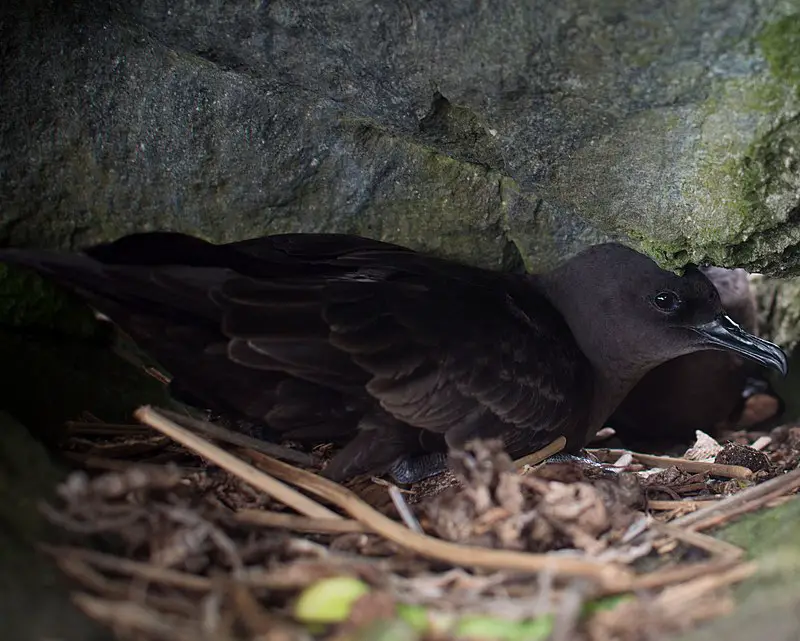
Bulwer’s petrel is a small seabird in the Procellariidae family which can be found across tropical and subtropical regions of the Atlantic, Indian and Pacific Oceans.
It was named after English naturalist James Bulwer who first described it in 1828 along with Jardine and Selby.
The bird has dark greyish plumage on its back while the underside is typically white or pale grey.
Its wings are short but broad making them ideal for soaring high above large bodies of water looking for food such as squid, fish, crustaceans and insects.
They use their long pointed bill to catch prey from both surface-skimming dives or underwater plunges up to 15 meters deep.
These birds nest burrows dug into soil cliffs where they lay just one egg each year which takes about 55 days to hatch.Scientific classification:
| Kingdom | Animalia |
| Phylum | Chordata |
| Class | Aves |
| Order | Procellariiformes |
| Family | Procellariidae |
| Genus | Bulweria |
| Species | B. bulwerii |
37. Bridled Tern
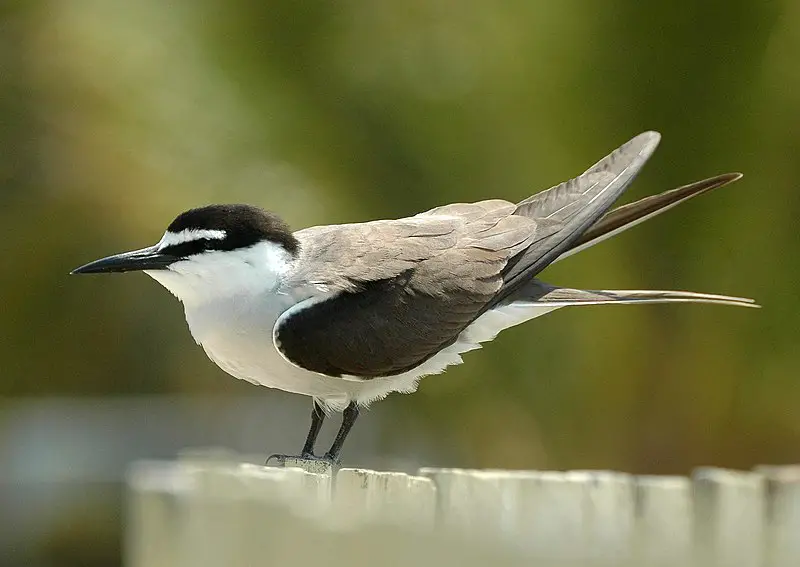
The Bridled Tern is a medium-sized seabird of the family Laridae, found in tropical oceans. It has an impressive wingspan of 77–81 cm and measures 30–32 cm in length – similar to that of the Common Tern.
Its scientific name originates from Ancient Greek; Onux meaning “claw” or “nail”, and Prion, which translates as “saw”. The specific anaethetus means ‘senseless’ or ‘stupid’.
These birds are elegant flyers with greyish brown upperparts and white underparts when they take off into flight, while their head appears black on top but turns to white below the eyes with a thin line between them.Scientific classification:
| Kingdom | Animalia |
| Phylum | Chordata |
| Class | Aves |
| Order | Charadriiformes |
| Family | Laridae |
| Genus | Onychoprion |
| Species | O. anaethetus |